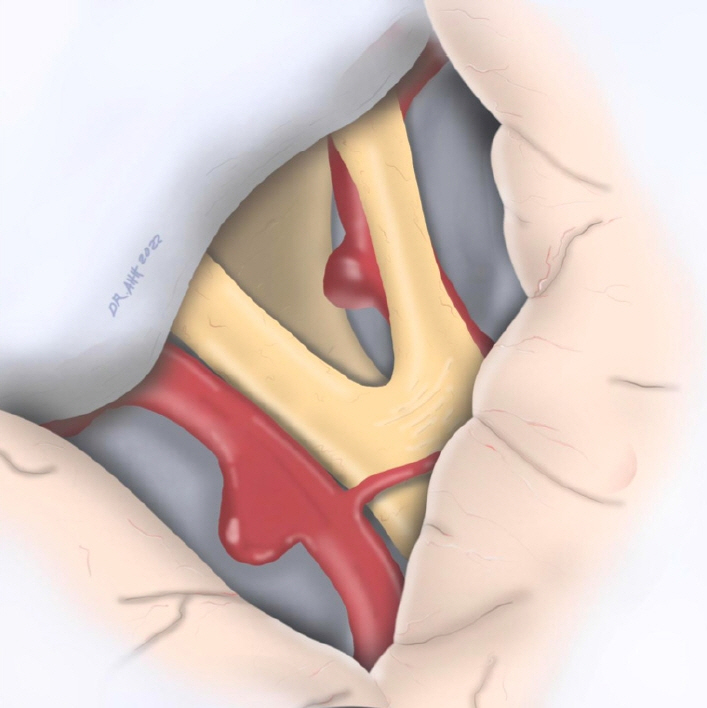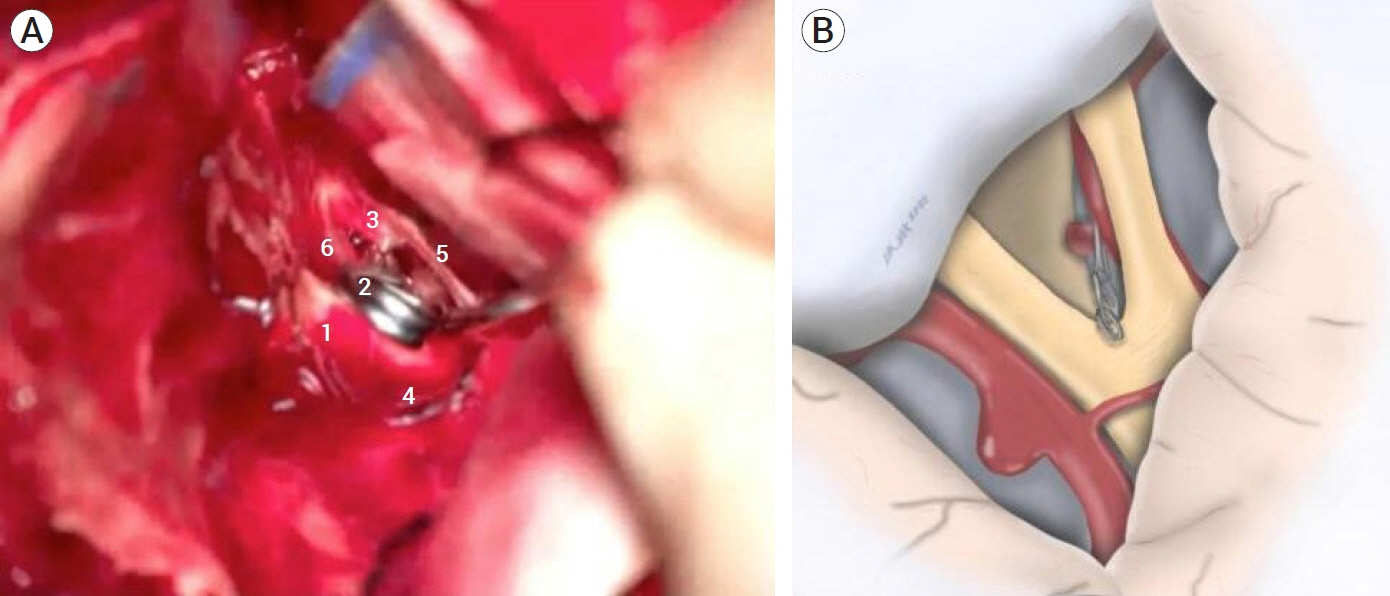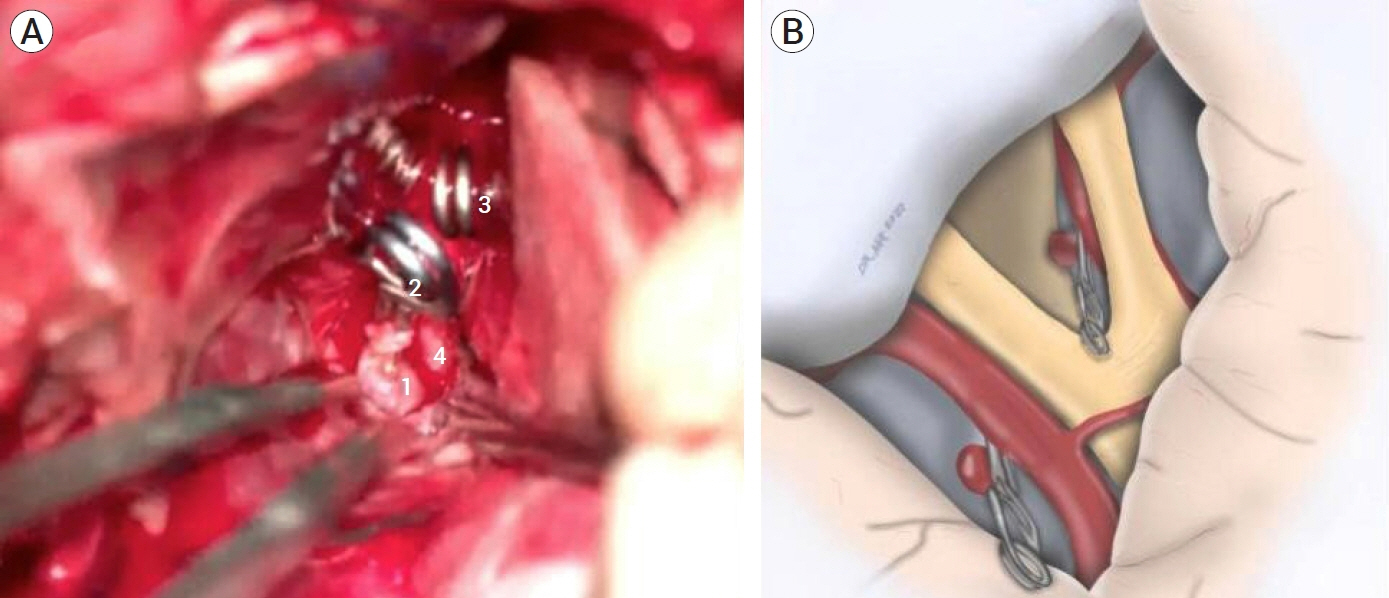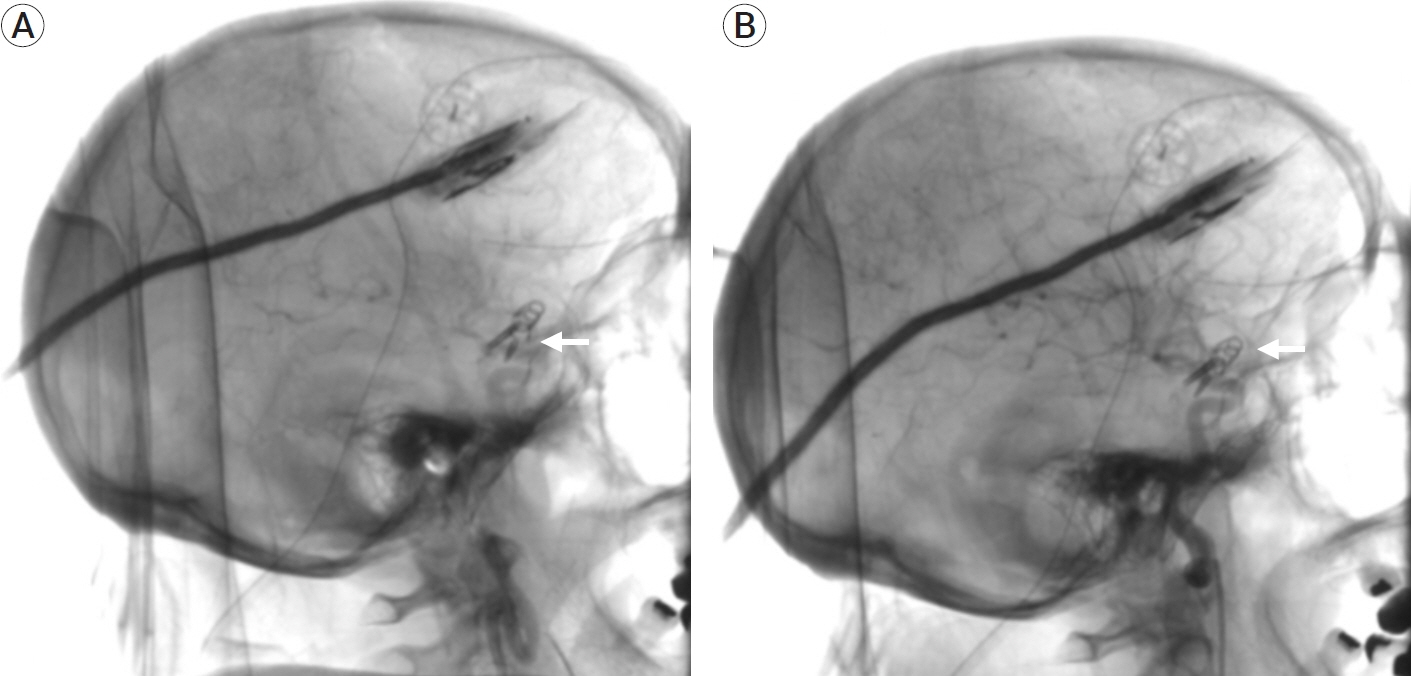J Cerebrovasc Endovasc Neurosurg.
2023 Dec;25(4):468-472. 10.7461/jcen.2023.E2022.12.002.
Unilateral approach for bilateral clipping of posterior communicating artery aneurysms in a hybrid operating room: A technical note
- Affiliations
-
- 1Department of Neurosurgery, National Institute of Neurology and Neurosurgery, Manuel Velasco Suárez, Mexico City, Mexico
- 2Department of Neurosurgery, Hospital Regional Toluca - ISSEMyM, Toluca de Lerdo, Mexico
- KMID: 2549454
- DOI: http://doi.org/10.7461/jcen.2023.E2022.12.002
Abstract
- Bilateral posterior communicating (pComm) artery aneurysms represent only 2% of mirror intracranial aneurysms. Usually, these are surgically approached through bilateral craniotomies for clipping. We present the case of a 50-year-old female presenting with headache and horizontal diplopia. Neurological examination revealed a left oculomotor palsy, with no other neurological deficits. Imaging studies revealed bilateral aneurysmatic lesions in both internal carotid arteries (ICA). A conventional left pterional approach was planned in order to treat the symptomatic aneurysm, and, if deemed feasible, a contralateral clipping through the same approach. The procedure was performed in a hybrid operating room (HOR), performing an intraoperative digital subtraction angiography (DSA) and roadmapping assistance during dissection and clipping. Transoperatively, a post-fixed optic chiasm was identified, with a wide interoptic space, which allowed us to perform the contralateral clipping through a unilateral approach. This technique for clipping bilateral pComm aneurysms can be performed when the proper anatomical features are met.
Figure
Reference
-
1. Choi HH, Cho YD, Yoo DH, Lee J, Mun JH, An SJ, et al. Intracranial mirror aneurysms: Anatomic characteristics and treatment options. Korean J Radiol. 2018; Sep-Oct. 19(5):849–58.2. Ellamushi HE, Grieve JP, Jäger HR, Kitchen ND. Risk factors for the formation of multiple intracranial aneurysms. J Neurosurg. 2001; May. 94(5):728–32.3. Kaminogo M, Yonekura M, Shibata S. Incidence and outcome of multiple intracranial aneurysms in a defined population. Stroke. 2003; Jan. 34(1):16–21.4. Lee YJ, Parreira T, Matouk CC, Menezes R, Mandell DM, terBrugge KG, et al. Clinical characteristics and preferential location of intracranial mirror aneurysms: A comparison with non-mirror multiple and single aneurysms. Neuroradiology. 2015; Jan. 57(1):35–40.5. Lu HT, Tan HQ, Gu BX, Wang W, Li MH. Risk factors for multiple intracranial aneurysms rupture: A retrospective study. Clin Neurol Neurosurg. 2013; Jun. 115(6):690–4.6. Meissner I, Torner J, Huston J, Rajput ML, Wiebers DO, Jones LK Jr, et al. Mirror aneurysms: A reflection on natural history. J Neurosurg. 2012; Jun. 116(6):1238–41.7. Wang J, Xu F. Unilateral supraorbital approach to clip bilateral posterior communicating artery aneurysms: 2-dimensional operative video. World Neurosurg. 2018; Nov. 119:256.8. Wang WX, Xue Z, Li L, Wu C, Zhang YY, Lou X, et al. Treatment strategies for intracranial mirror aneurysms. World Neurosurg. 2017; Apr. 100:450–8.9. Wiebers DO, Whisnant JP, Huston J 3rd, Meissner I, Brown RD Jr, Piepgras DG, et al. Unruptured intracranial aneurysms: Natural history, clinical outcome, and risks of surgical and endovascular treatment. Lancet. 2003; Jul. 362(9378):103–10.10. Yuan J, Huang C, Li Z, Jiang X, Zhao X, Wu D, et al. Hemodynamic and morphological parameters of ruptured mirror posterior communicating artery aneurysms. Front Neurol. 2021; Sep. 12:653589.
- Full Text Links
- Actions
-
Cited
- CITED
-
- Close
- Share
- Similar articles
-
- Technical Consideration in Clipping of the Anterior Communicating Aneurysms: The Gyrus Rectus Approach, Report of Two Operative Cases
- True Posterior Communicating Artery Aneurysm
- Unilateral Approach to Bilateral Aneurysms: Case Report
- Large Aneurysm Arising from the Inferior Wall of the Segment of the Posterior Communicating Artery
- True Posterior Communicating Artery Aneurysm






